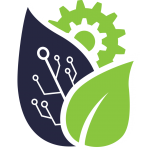PET Spectrometer (On Hold)
Environmental Stewardship & Social Justice
Problem Statement
This project is a sister project with Waste Not, Want Not and RePlay PLA
PET Spectrometer is a student team working on developing low-cost and accessible portable hardware that will identify types of plastics picked up during beach cleanups and waste audits so it can be appropriately disposed or even upcycled. This spectrometer is meant to work in conjunction with the Waste Not, Want Not’s waste auditing app for use at UCSC and beyond.
UCSC Waste Management conducts audits on contents of residential recycling bins on campus in order to analyze the amount of specific plastics within the waste stream and sort out non-recyclable plastics from the recycling bins. These audits would be easier if the different types of plastics could be easily identified during the audit, but available devices are both expensive and cumbersome to carry, making them impractical to UCSC Waste Management. The goal of this project is to design a portable ATR-IR (Attenuated Total Reflection-Infrared) spectrometer that can be produced at a price affordable to the UCSC Waste Management team, while still being able to differentiate the most common non-recyclable plastic, PLA, from the three other most common plastics PET, HDPE, and PP.
The end goal of this project is to design a more cost effective portable spectrometer, allowing UCSC waste management to keep PLA plastics out of the campus’ recycling and waste stream. By doing so, the separated PLA plastics can be kept on campus and can potentially be repurposed for 3D printing by the Sustainability-Lab, which can then lead to the selling of PLA filament to users across the UC system. Dispersing these low-cost PLA feedstocks will provide a future revenue stream for the project, as well as avoiding the economic and ecological costs of shipping a large quantity of unfiltered waste to local or overseas landfills.
Goals
Background and Feasibility:
Every year, the US sends over one million tons of plastic waste overseas with only 8% of this plastic being recycled, repurposed, or upcycled and the vast majority of these get downcycled and ultimately end up in landfills1. To aid in resolving this problem, CA Assembly Bill No. 793 proposes that plastic bottles must include at least 15% post-consumer recycled plastic starting in 2022, and gradually working to have at least 50% post-consumer plastic by 2030. Starting 2024, and annually thereafter, plastic material reclaimers shall be required to report the amount of empty plastic beverages containers that the plastic material reclaimer has collected and sold in previous years to assure that the bill is being carried out successfully. Optical spectroscopy can assist in the improvement of current recycling methods to improve the percentage of identified virgin plastic waste and subsequently repurpose it as post-recycled plastic. Most optical spectrometers on the market right now are designed for lab use and are optimized to produce high resolution spectra and provide versatile analysis for a wide variety of materials. They typically enclose the sample, and often require it to be processed in some fashion (for example, ground into a powder). Additionally, these spectrometers can take in the range of several minutes to complete a scan, and are also typically very expensive, costing on average upwards of 5000 dollars, making them a poor choice for small companies or non-profit organizations. Additionally, while portable spectrometers do exist for industrial and research purposes, they are extremely unwieldy, have scan times upwards of five seconds, and still often cost multiple thousands of dollars, which makes them no more useful than the lab versions for long-term field work.
Project Goals:
To identify plastics recovered from beach cleanups and other waste audits for appropriate disposal, the team is designing an open-source handheld spectrometer. The device must be able to complete its scan in under 5 seconds, and must also be small enough and light enough to be carried and used at various locations on campus by a UCSC worker. It must be rechargeable, and must have a battery capacity that supports regular use of the device throughout a full work shift, approximately 8 hours. It is also required that the device be able to establish a bluetooth connection to the CITRIS: Zero Waste Mobile Application, in order to transmit the plastic class it has identified for each scan. Additionally, the device must be produced with a budget of $2000 in order for the device to be deemed affordable by the stakeholders.
We propose an ATR spectrometry with an array of narrow-band LEDs and a photodiode detector with a detection bandwidth of 1.3μm.This design would cover characteristic peaks the different plastics using cheaper materials for ATR-IR crystals, relative to industry-grade devices. The device will also be able to relay collected spectral data to a waste-audit mobile application via Bluetooth wireless connection.

